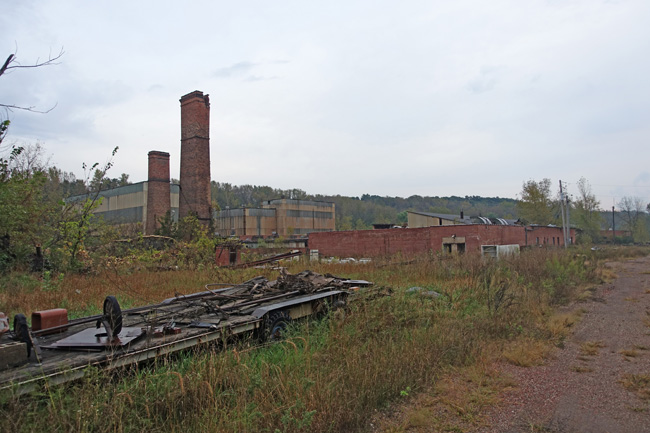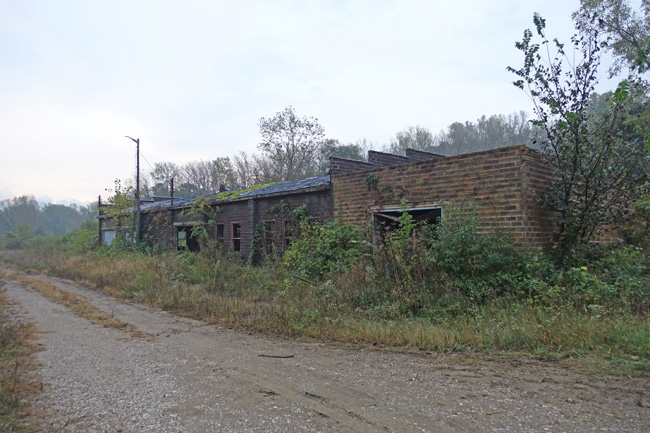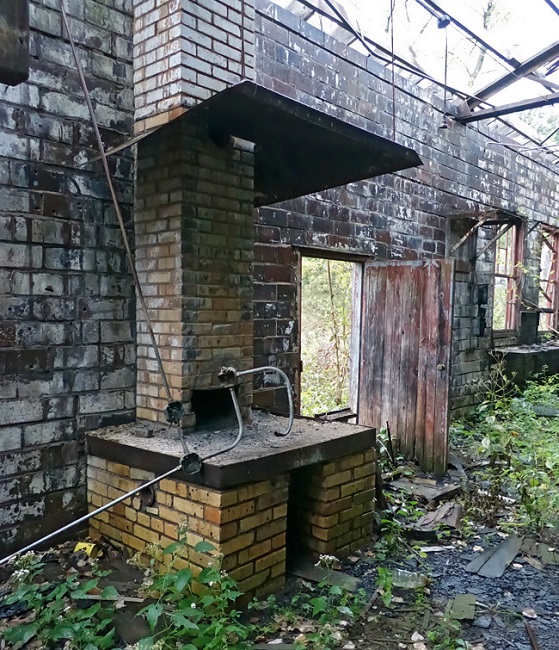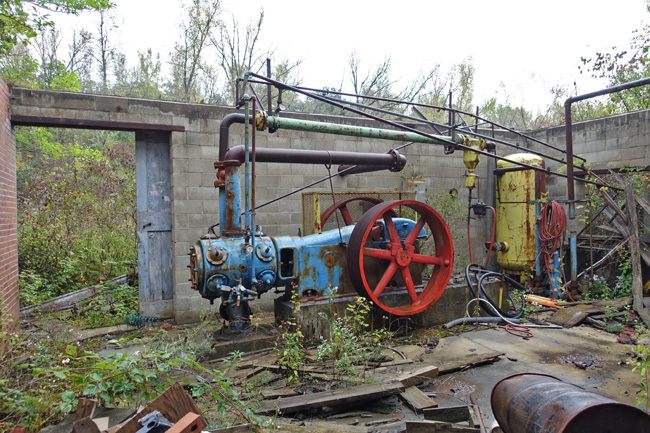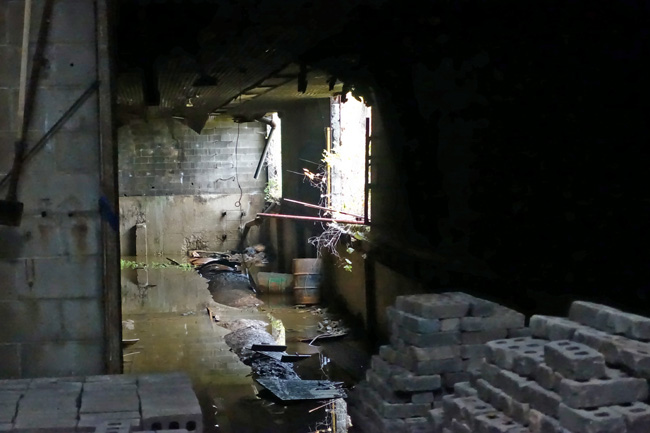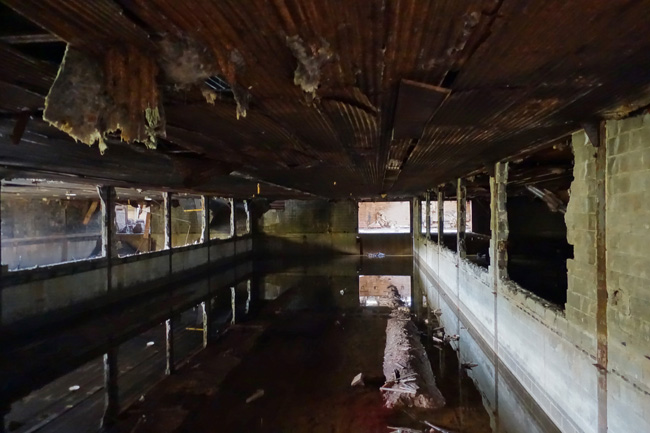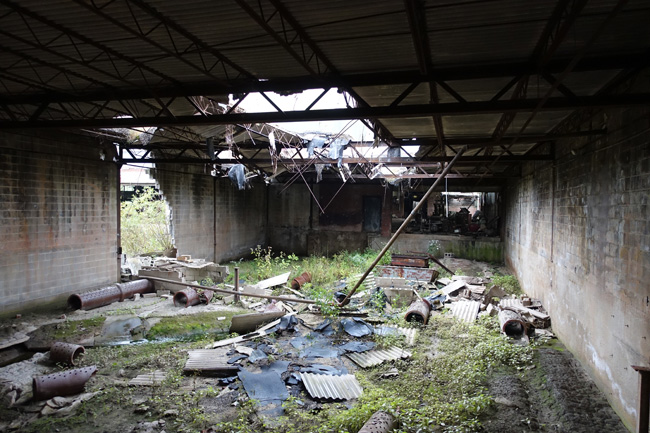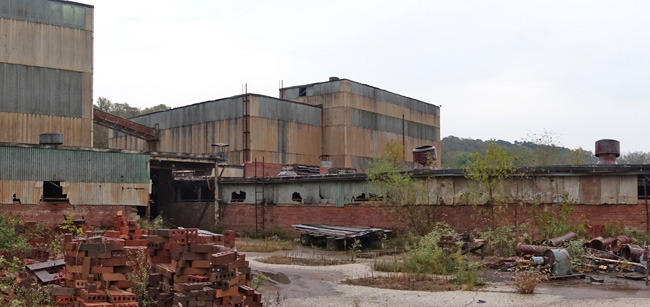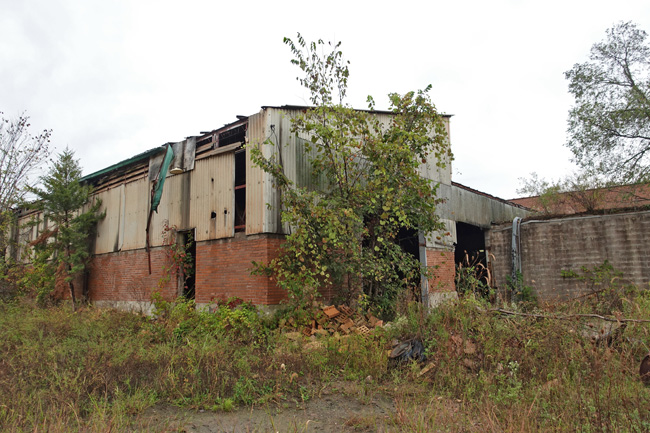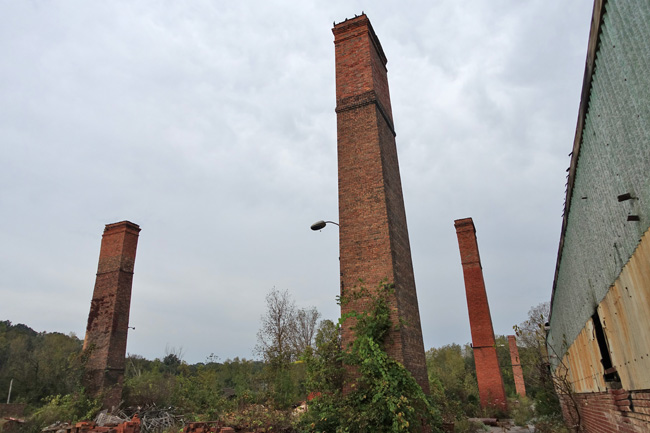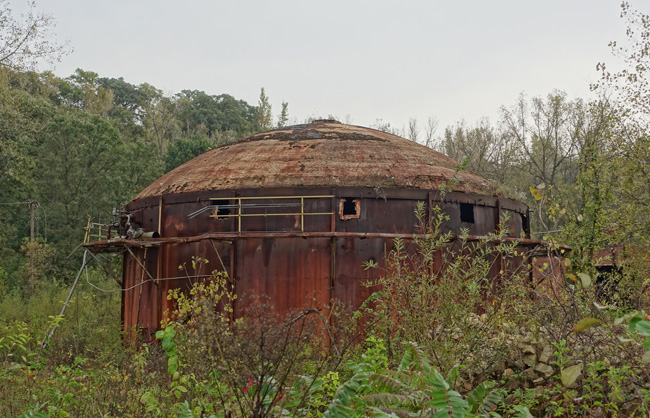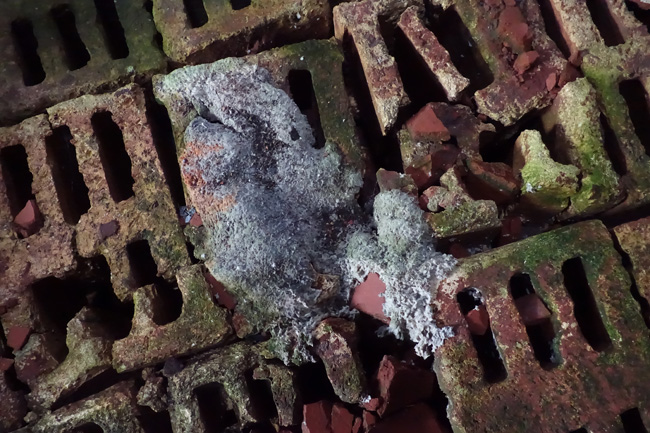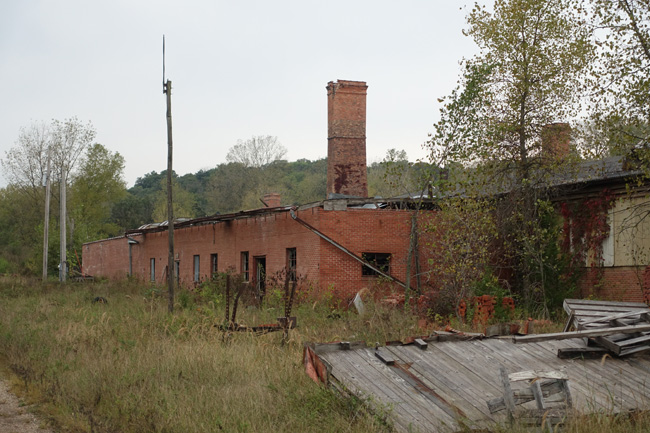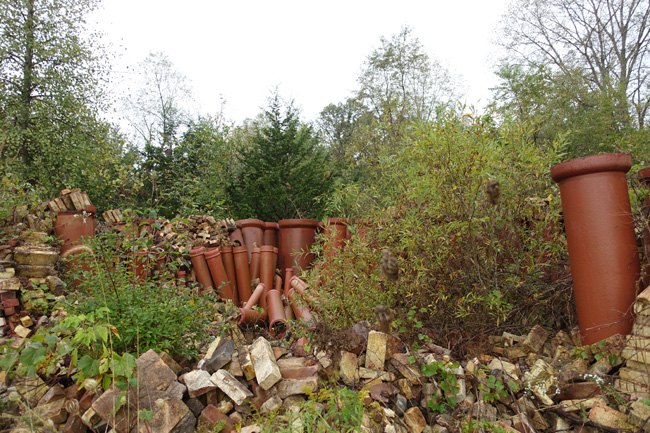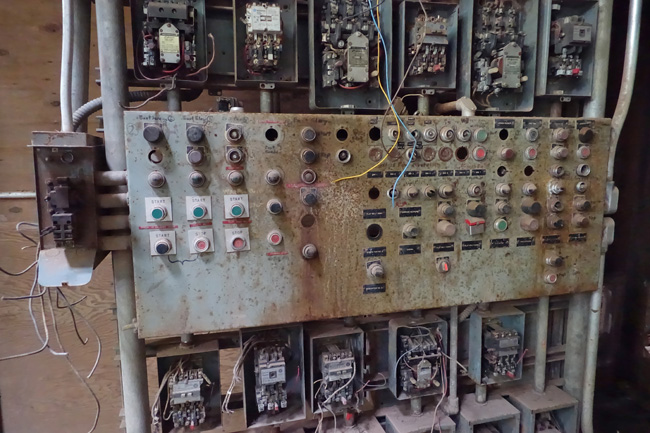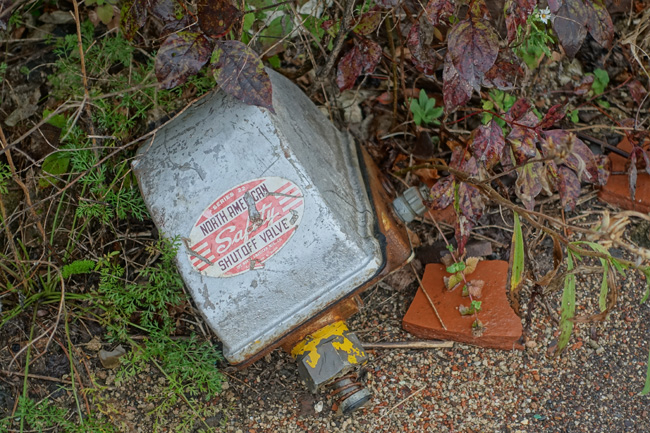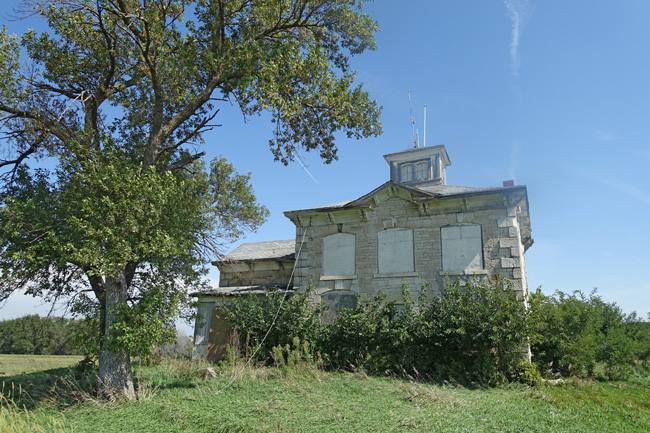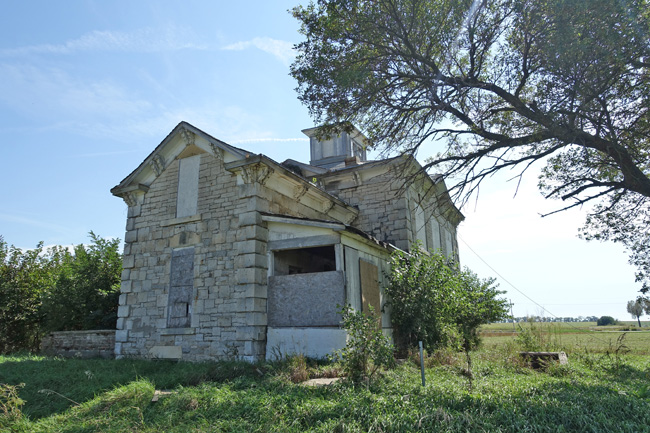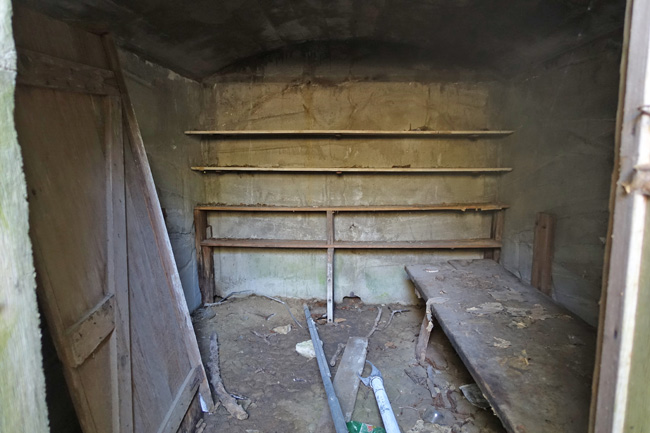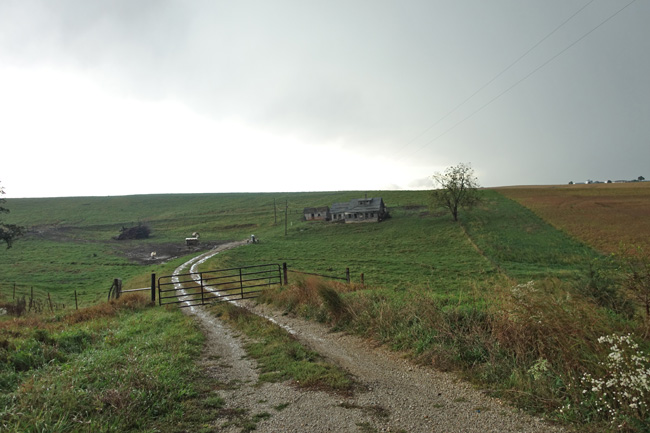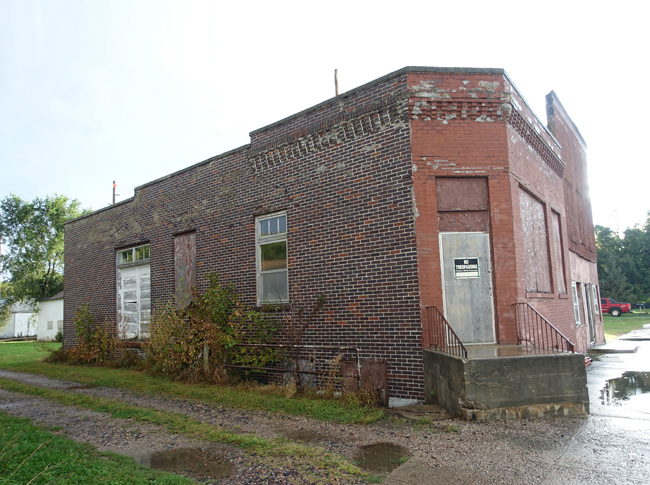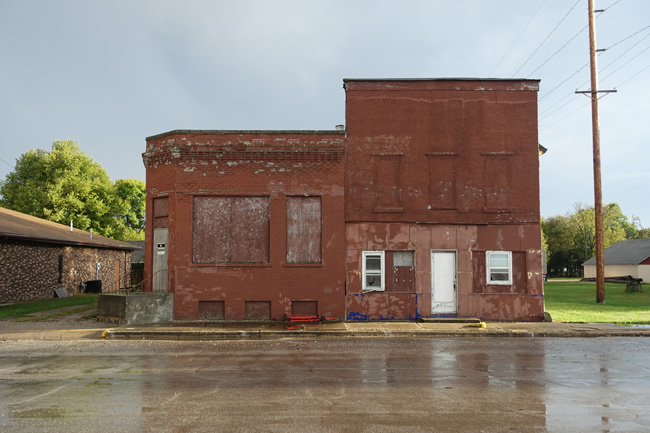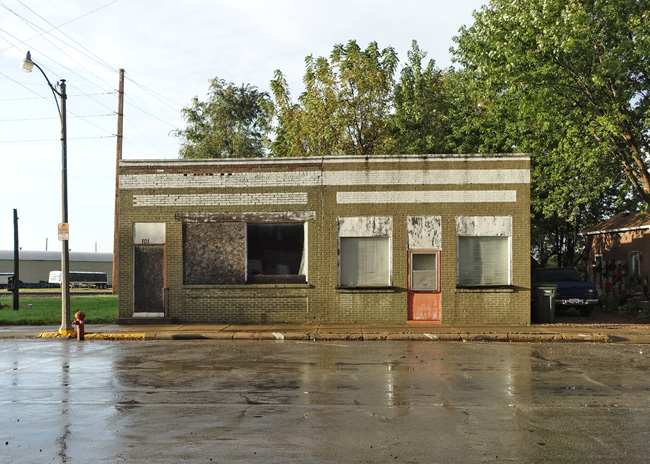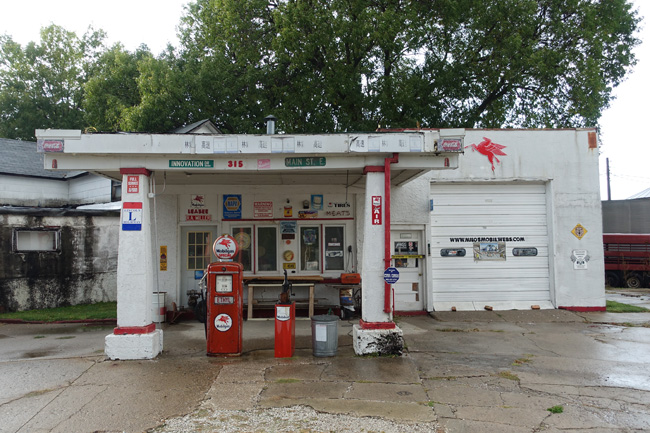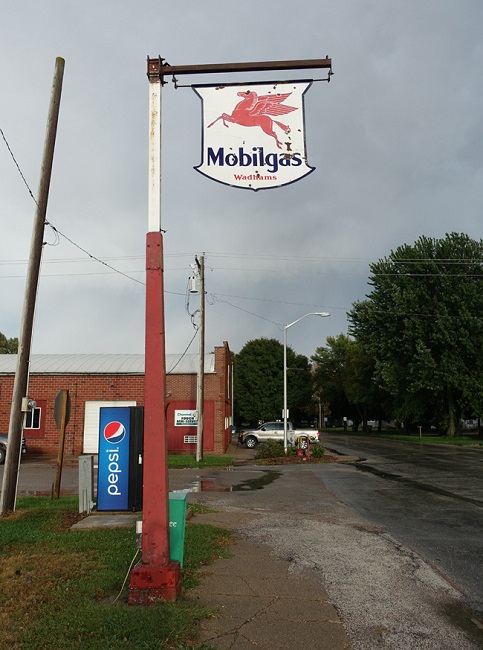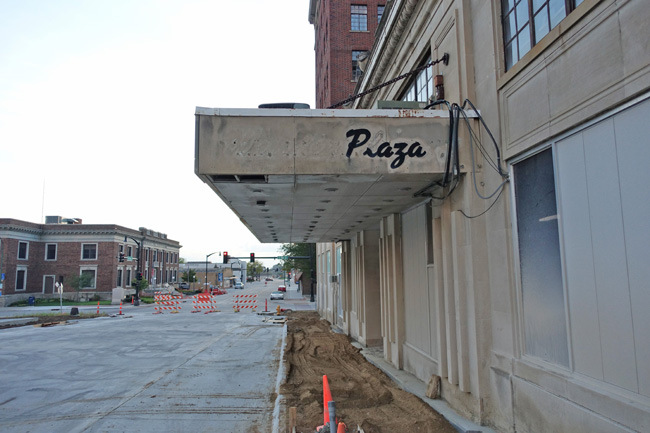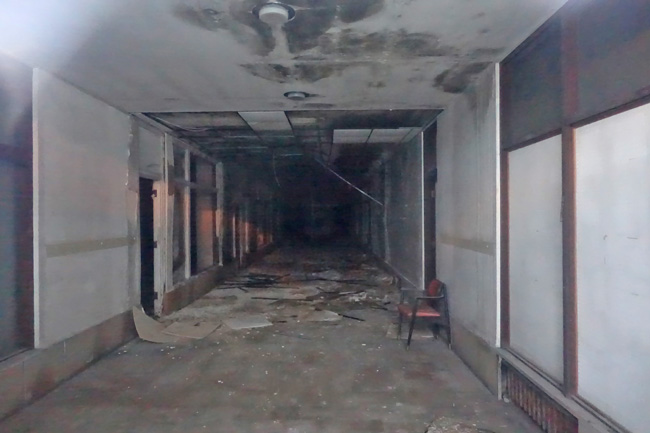I'd been in Iowa for less than 24 hours, and already I'd fallen in love with the state. Wending my way along rural roads, stopping to admire the simple beauty of abandoned homesteads and the majesty of a vacant luxury hotel, it quickly became apparent that Iowa was home to many hidden gems.
Iowa Brick is one such gem. Closed several decades ago, the old brickyard is still largely intact. Vandals have left it alone for the most part, allowing nature to creep back in and slowly wear away at the structures and equipment that were left behind.
[**Note: This facility is located on private property and CANNOT be accessed without permission from the owner]
The ceiling of the old workshop has begun to collapse, allowing a bed of moss and small plants to take root.
The place looks to have been abandoned very suddenly. Workbenches still line the walls...
Forklifts and other equipment are still parked inside several of the old structures.
Stacks of brick wait patiently to be shipped out to customers.
Many of the rooms were flooded from the previous night's storm.
Located near the banks of Crooked Creek, I wouldn't be surprised if flooding was a common occurence in the old brick factory.
Inside the main factory, eerie silence hangs in the air, interrupted only by the echoing sounds of dripping and my footfalls.
It's strange to imagine that these places were once filled with workers' voices and the roar of industry.
Half a dozen chimneys keep vigil on the grounds of the old brickyard.
Piles of rubble at their bases mark the locations of smaller structures that collapsed long ago.
An enormous dome-shaped kiln rusts among the thick vegetation.
Time and the elements have done incredible things to the brick walls and floor inside.
Lehigh, a small town in Webster County, Iowa, was built upon two major industries: coal mines and brickyards. Brickyards made clay from shale excavated at the local coal mines. Formed into bricks and drain tile, the clay was baked in kilns heated by coal from the same mines.
Coal mining declined in Webster County during the first half of the 20th century. The population of Lehigh has fallen steadily since then, from 1,004 in 1940 to about 400 nowadays.
Lehigh Brick and Tile company was established in the late 1800s as a producer of bricks and ceramic sewer and drain pipes.
In 1896, the company won the contract to produce the paving brick for the city of Dubuque, Iowa. Then in 1897 a serious fire crippled the facility. Several other local brickyards rushed in to fill the void in production. By 1903, Lehigh Brick and Tile had fully recovered from the fire and was back in business.
Most of the structures that currently occupy the site were built in the 1950s and '60s, with the final additions made in the late '70s.
At some point, the Lehigh Brick and Tile Company became Iowa Brick. It operated under that name until the facility closed in the 1980s.
After stopping in Lehigh, I hit the road again and headed off to check out the ruins of an old boarding school.
Thanks for checking out this article. If you enjoyed it, please feel free to share it on Facebook. While you're at it, please subscribe to Places That Were.
I have quite a few more pictures from this location -- too many to include here. I'll be sharing them on social media, so be sure to follow me if you'd like to see more:
Facebook: http://www.facebook.com/placesthatwere
Google+: https://plus.google.com/u/0/+JimSullivanPlacesThatWere/posts
EyeEm: https://www.eyeem.com/u/placesthatwere
Instagram: http://instagram.com/theplacesthatwere
Twitter: https://twitter.com/placesthatwere/
Tumblr: http://placesthatwere.tumblr.com/
Youtube: https://www.youtube.com/jimplicit
500px: https://500px.com/placesthatwere
Thank you!

